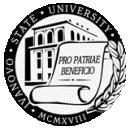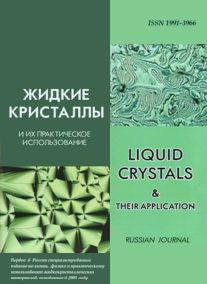|

|
Liquid Crystals and their Application
Russian Journal Zhidkie kristally i ikh prakticheskoe ispol'zovanie Жидкие кристаллы и их практическое использование |

|
|

|

|
|
|
Menu

|
|
|
|
|
Zhidk. krist. ikh prakt. ispol'z. = Liq. Cryst. and their Appl., 2017, 17 (4), 6—30.
DOI: 10.18083/LCAppl.2017.4.6 |

|
|
DNA Liquid-Crystalline Dispersion Particles as a Platform for Creation of “RIGID” Spatial Structures
|
Yu. M. Yevdokimov, V. I. Salyanov, S. G. Skuridin
|
Author affiliations
Engelhardt Institute of Molecular Biology of the Russian Academy of Sciences,
32 Vavilova St., Moscow, 119991, Russia
E-mail: yevdokim@eimb.ru
|
|
Abstract
The properties of double-stranded DNA liquid-crystalline dispersion particles formed as a result of the phase exclusion of these molecules from water-salt solutions of poly(ethyleneglycol) are considered. For the first time a generalized approach to the creation of “rigid” particles (nanoobjects) from DNA liquid-crystalline dispersion particles was formulated. It is based on the joining all DNA molecules forming a single dispersion particle as a result of sharp decrease in their solubility and formation of the high-molecular mass, integrated (gel-like, “rigid”) structure. The physicochemical variants of this approach include sharp decrease in solubility of adjacent double-stranded DNA molecules ordered in quasi-nematic layers of liquid-crystalline dispersion particle due to their “salting-out” under action of cations of rare earth elements, or “cross-linking” of neighboring DNA molecules by synthetic nanobridges consisting of alternating molecules of an antibiotic – daunomycin and bivalent copper ions. The nanotechnological variant is based on incorporation of small size gold nanoparticles in “free” space between DNA molecules, which are ordered in quasi-nematic layers of liquid-crystalline dispersion particle. This process results in creation of gold clusters in “free” space between adjacent DNA molecules. It is accompanied by increase of interaction between DNA molecules via gold nanoparticles and by decrease in a solubility of dispersion particle. The formed high molecular mass “rigid” structures are incompatible with the initial aqueous polymeric solution and have unique properties. Practical application of “rigid” DNA particles for medicine and biosensorics is demonstrated.
Keywords: double-stranded DNA, DNA liquid-crystalline dispersions, DNA-based nanostructures, circular dichroism, absorption spectroscopy, atomic force microscopy, small-angle X-ray scattering, gadolinium ions, crosslinks, synthetic nanobridges, gold nanoparticles, neutron capture therapy, biosensors
|
|
|
|
|
|




